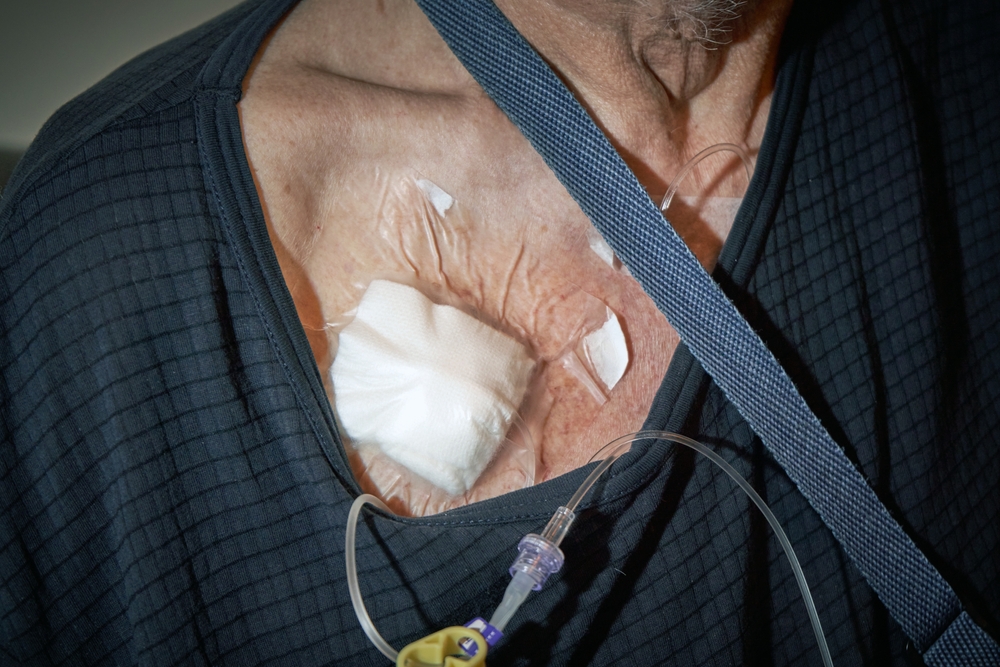In the world of medical treatments, port-a-caths, also known as implantable ports or subcutaneous ports, have become a common tool for delivering medications and fluids directly into a patient’s bloodstream. These devices, which are implanted under the skin, provide healthcare professionals with easy access to a patient’s veins, making treatments such as chemotherapy more convenient and efficient. However, recent lawsuits and research studies have shed light on the potential dangers associated with port-a-caths, and patients have reported serious injuries, including fractures, migrations, infections, and even pulmonary embolism. One recent port-a-cath lawsuit brought against Bard by a Maryland woman alleges that her Bard Infuse-A-Port device fractured, sending fragments to her heart and leading to a pulmonary embolism.
What are Port-a-Caths?
Port-a-caths are implantable devices that consist of two main components: an injection port and a catheter tube. The injection port is a small, self-sealing reservoir that is implanted just below the skin near a vein. It allows healthcare professionals to easily insert a needle and deliver medications or fluids directly into the bloodstream. The catheter tube connects the injection port to a larger vein, facilitating the transfer of medications or fluids. Popular brands of port-a-caths include the Bard Infuse-A-Port, which is part of the Bard PowerPort product line. These devices are marketed as being able to withstand higher injection pressures, making them suitable for a wide range of medical treatments.
Risk of Port-a-Cath Side Effects
While port-a-caths have proven to be effective in delivering medications and fluids, they are not without risks. Numerous studies and patient reports have highlighted the potential dangers associated with these devices.
Fractures and Migrations
One of the most concerning risks associated with port-a-caths is the potential for fractures and migrations. The catheter tube, typically made of polyurethane or silicone, can become brittle over time, leading to fractures. When a fracture occurs, fragments of the catheter can migrate throughout the body, causing serious internal damage. In some cases, these fragments can reach vital organs, such as the heart, leading to life-threatening complications.
Infections
Another risk associated with port-a-caths is the potential for infections. The tissue surrounding the implanted device is susceptible to infection, and if left untreated, it can lead to bloodstream infections, severe swelling, and even necrosis of the surrounding tissues. Infections require prompt medical attention and can be costly to treat.
Pulmonary Embolism
A particularly dangerous side effect of port-a-caths is the risk of pulmonary embolism. If a fragment of the catheter migrates to the lungs, it can cause a blockage in the pulmonary arteries, leading to a potentially life-threatening condition. The risk of pulmonary embolism is heightened when catheter fractures occur.
Other Potential Side Effects
In addition to fractures, migrations, infections, and pulmonary embolism, port-a-caths have been associated with other side effects such as blood clots, cardiac punctures, hemorrhage, and organ perforation. These complications can cause severe pain, require emergency surgery, and have long-term consequences for patients.
Recent Bard Infuse-A-Port Lawsuits
The dangers associated with port-a-caths have led to a significant number of lawsuits against manufacturers, including C.R. Bard and Bard Access Systems, Inc. One such lawsuit was filed by plaintiff Johanna Randow in Arizona federal court on September 19, 2023. Randow was implanted with a Bard Infuse-A-Port vascular access device in April 2018, to facilitate her chemotherapy treatment. However, the device failed and she underwent revision surgery in July 2019 to have it removed. In November 2021, Randow suffered a pulmonary embolism and it was discovered upon examination that the port-a-cath had fractured, causing fragments of the device to enter her heart. She is seeking compensation for her injuries and the ongoing risks she faces as a result of the port-a-cath fragments that remain in her heart.
Randow’s lawsuit joins a growing number of Bard Infuse-A-Port lawsuits that allege the device’s catheter tube is prone to fractures and ruptures, leading to life-threatening complications. Plaintiffs involved in the Infuse-A-Port litigation argue that Bard knew about the risk of problems associated with its port-a-cath devices, including reports of failures, fractures, and other injuries, but failed to adequately warn patients or the medical community. “Defendants did not adequately warn Plaintiff or Plaintiff’s physicians of the true quantitative or qualitative risk of fracture, migration, perforation, thromboembolism or dislodgment associated with the Infuse-A-Port system,” Randow’s complaint states. “Rather than alter the design of their product to make it safer or warn physicians of the dangers associated with the Infuse-A-Port, the Defendants chose to continue their efforts to promote their defective product.”
Port-a-Cath Litigation News
Port-a-caths have revolutionized medical treatments by providing convenient access to a patient’s veins for the delivery of medications and fluids. However, the risks associated with these devices, including fractures, migrations, infections, and pulmonary embolism, are cause for concern. As more complaints are brought against Bard, each raising similar allegations that the manufacturer failed to disclose the potential risks associated with its port-a-cath devices, the U.S. Judicial Panel on Multidistrict Litigation (JPML) has consolidated all Bard port-a-cath claims in federal court in Arizona, to better handle the growing number of lawsuits. This consolidation allows for coordinated pretrial procedures and may lead to more efficient resolution of the port-a-cath lawsuits.
Port-a-Cath Lawsuit Information
Migration of A Port-A-Cath in to the Heart, Journal of Cardiology & Current Research
Complications of central venous port systems: a pictorial review, Insights Imaging
Outcomes following port-a-catheter placement in the Medicare population, Surgery Open Science




